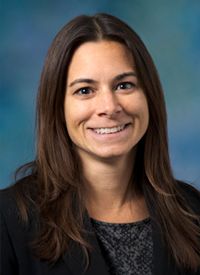Article
Risk-Based Triaged Mammograms Demonstrate Success During Periods of Reduced Capacity
Author(s):
Triaging individuals with the highest likelihood of cancer detection with their clinical indication and individual risk factors during periods of reduced capacity could be an efficient way of identifying the most cancers with the least examinations compared with a non–risk-based approach.
Diana L. Miglioretti, PhD

Triaging individuals with the highest likelihood of cancer detection with their clinical indication and individual risk factors during periods of reduced capacity could be an efficient way of identifying the most cancers with the least examinations compared with a non–risk-based approach, according to findings from a population-based cohort study published in JAMA Network Open.1,2
The results demonstrated that among 898,415 individuals who had undergone 1,878,924 mammograms, 12% of mammograms with very high and high cancer detection rates comprised 55% of detected cancers, whereas 44.2% of mammograms with a very low cancer detection rate comprised 13.1% of detected cancers.
“What this means is that triaging individuals most likely to have cancer during periods of reduced capacity may be effective at detecting the most cancers with the fewest mammograms versus using a non-risk-based approach,” Diana L. Miglioretti, PhD, lead study author, professor and division chief of biostatistics at the UC Davis Department of Public Health Sciences, and affiliate investigator with Kaiser Permanente Washington Health Research, said in a press release.
Breast cancer screening, surveillance, and diagnostic imaging services were significantly reduced during the onset of COVID-19. As such, investigators wanted to develop a risk-based strategy that could be used to triage mammograms during periods of limited capacity.
To that end, investigators compiled data that had been collected prospectively from mammography examinations performed between 2014 and 2019 at 92 radiology facilities in the Breast Cancer Surveillance Consortium. Participants included individuals undergoing mammography. Data were evaluated from August 10, 2020 to November 3, 2020.
Exposures included clinical indication for screening, breast symptoms, personal history of breast cancer, age, time since last mammogram or screening interval, family history of breast cancer, breast density, and history of high-risk breast lesion.
Classification and regression trees were used to identify combinations of clinical indication, clinical history, and breast cancer risk factors that subdivided mammograms into risk groups according to their cancer detection rate.
Among the cohort of 898,415 individuals who had undergone 1,878,924 mammograms, the mean age at mammogram was 58.6 years. The mammograms had been evaluated by 448 radiologists. A total of 1,722,820 mammograms were performed in individuals without a personal history of breast cancer vs 156,104 in individuals with a history of breast cancer.
The majority of individuals were aged 50 years to 69 years at imaging (n = 1,113,174 mammograms; 59.2%). Individuals represented in the study were Black (n = 204,305; 11.2%),
Asian or Pacific Islander (n = 206,087; 11.3%), Hispanic or Latina (n = 126,677; 7.0%), or another race/ethnicity or mixed race/ethnicity (n = 40,021; 2.2%).
Additional findings revealed that cancer detection rates varied depending on clinical indication, breast symptoms, personal history of breast cancer, and age.
Among the 12% of mammograms with very high [(89.6; 95% CI, 82.3-97.5) to 122.3 (95% CI, 108.1-138.0 cancers detected per 1000 mammograms)] or high [(36.1; 95% CI, 33.1-39.3) to 47.5 (95% CI, 42.4-53.3 cancers detected per 1000 mammograms)], cancer detection rates comprised 55.0% of all detected cancers. Such mammograms had been performed to evaluate an abnormal mammogram or breast lump in individuals of all ages regardless of breast cancer history, to evaluate breast symptoms other than a lump in individuals with a breast cancer history or without a history but aged 60 years or older, and for short-interval follow-up in individuals aged 60 years or older without a breast cancer history.
“Whether it is due to unexpected new surges in COVID-19 cases prompting new lockdowns or other emergencies such as cyberattacks or natural disasters like wildfires, the study results provide important guidance for navigating through any crisis that could impact the availability of mammograms,” said Miglioretti.
Additionally, the 44.2% of mammograms with very low cancer detection rates comprised 13.1% of detected cancers and included annual screening mammograms in individuals aged 50 years to 69 years (3.8; 95% CI, 3.5-4.1 cancers detected per 1000 mammograms) and all screening mammograms in individuals younger than 50 years irrespective of screening interval (2.8; 95% CI, 2.6-3.1 cancers detected per 1000 mammograms).
“It is very important that individuals consult their clinician if they have any concerning breast symptoms such as a new or changing lump and schedule their screening mammogram if they are overdue,” Christoph Lee, MD, MS, MBA, senior author, professor of radiology at the University of Washington School of Medicine, and an affiliate investigator with Kaiser Permanente Washington Health Research, concluded in the press release. “Clinicians and other healthcare staff are now vaccinated, and medical offices are taking all precautions to keep patients safe from COVID.”
References
- Miglioretti DL, Bissell MCS, Kerlikowske K, et al. Assessment of a risk-based approach for triaging mammography examinations during periods of reduced capacity. JAMA Netw Open. 2021;4(3):e211974. doi:10.1001/jamanetworkopen.2021.1974
- Catching more breast cancers when mammograms are limited. News release. UC Davis Health. March 25, 2021. Accessed April 16, 2021. https://health.ucdavis.edu/health-news/newsroom/catching-more-breast-cancers-when-mammograms-are-limited--/2021/03.







